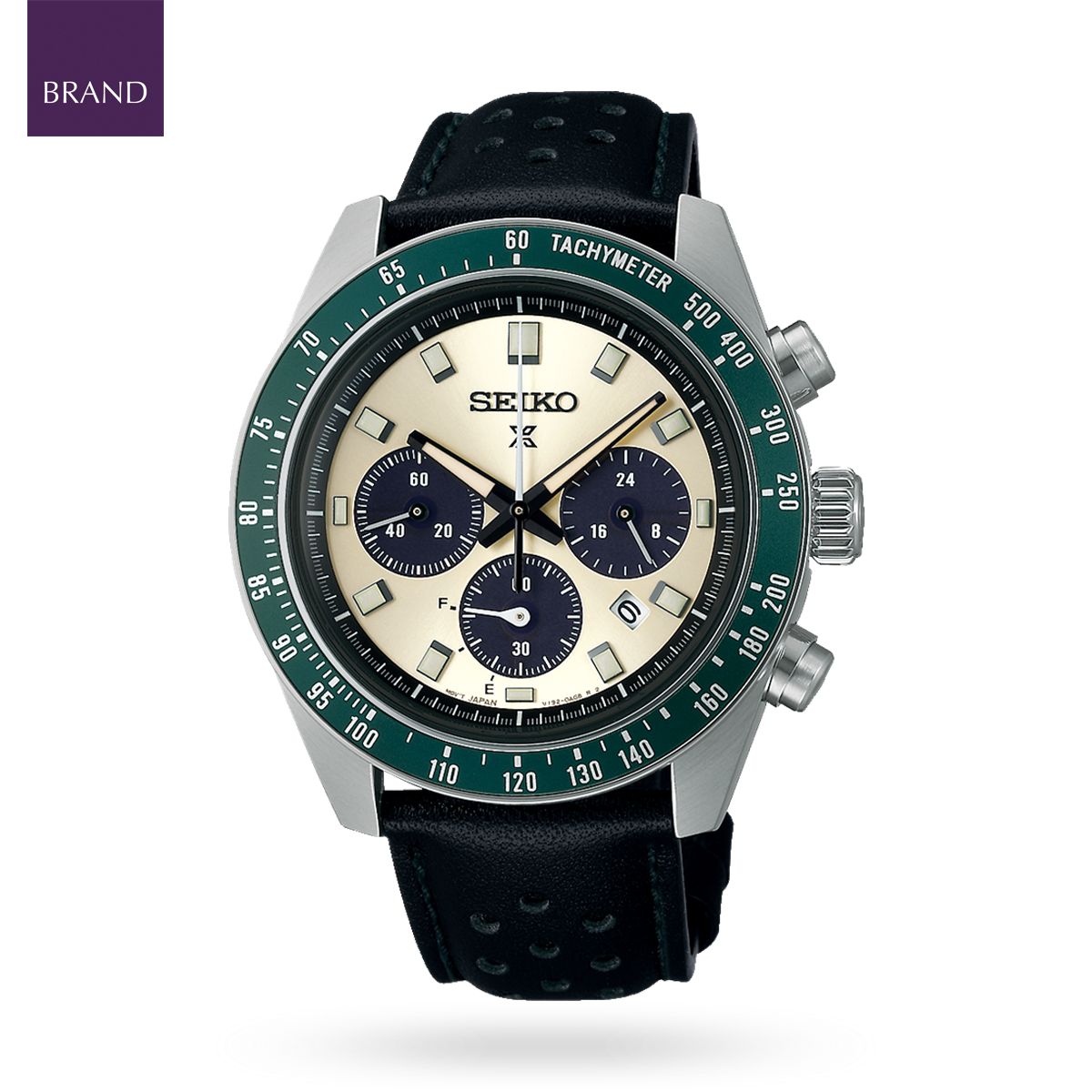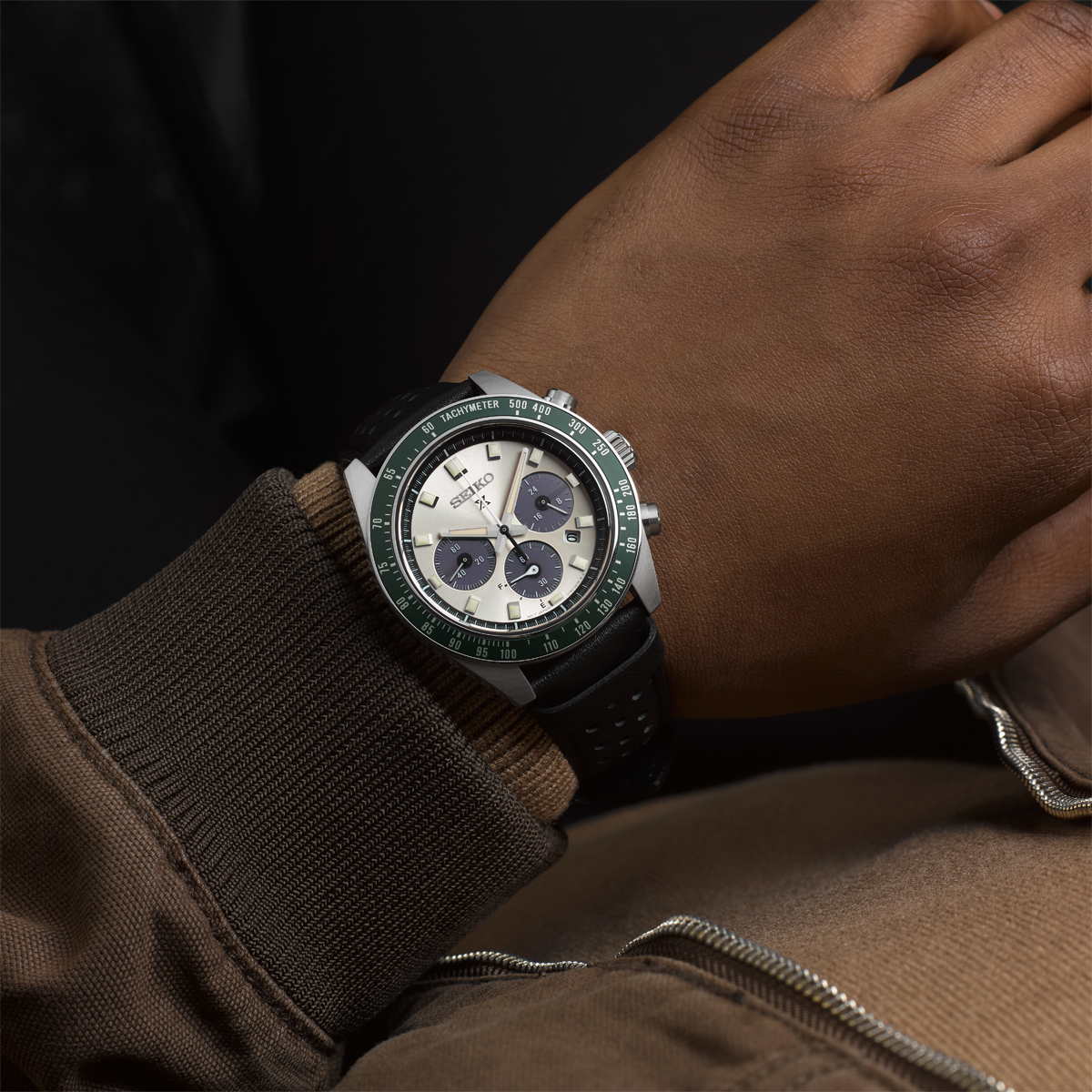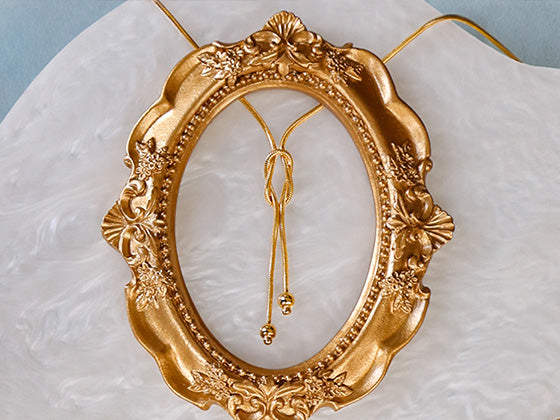Introduced in 1969, the Seiko Speedtimer was a major milestone in chronograph innovation, and marked the beginning of an important decade of the Speedtimer in its prime. The 70s were famed for many things: fashion, music, but also motorsports. Designed under the theme of ‘Classic Motorsports,’ the ‘Racing Sports’ Speedtimer is inspired by the lightweight sports cars of the past.
Encased in a classic dark green aluminium bezel and sapphire crystal glass, this chronograph features an ivory-coloured dial, with hour and minute hands that resemble the original Speedtimer from 1969. With 12 spots of Lumibrite, this timepiece is designed to be legible in darker conditions. With a chronograph second scale around the dial ring, this piece also features a Tachymeter on the bezel for measuring speed – an iconic element of the Seiko Speedtimer. This Solar Speedtimer comes with a black punched calf leather strap – a first for a Seiko Speedtimer.
Featuring a solar-powered V192, this Speedtimer chronograph is accurate to +/- 15 seconds per month, whilst maintaining a full charge of 6 months.
Prospex timepieces are practical, reliable and durable within extreme or everyday environments, for sports lovers and adventure seekers alike. Seiko 3 Year Guarantee.
General Watch Care:
Avoid direct contact with: fragrances, lotions, cosmetics, skincare, hairspray, detergents, solvents / other chemicals. Avoid damaging the movement by sudden impact or shock. Vibrations to the movement can be caused when participating in physical activities such as by playing sports (eg: tennis, golf…).
Avoid extreme temperature changes (saunas). For mechanical watches, avoid prolonged exposure to magnetism, as it can cause minor interference or if exposed to stronger sources, it can stop the watch. To prevent scratches, avoid wearing a bracelet on the same wrist.
Water Resistance:
Many watches are labelled as “water resistant”, this means that it is only humidity protected. So, whilst it can withstand accidental splashes (rain/washing your hands), it is not suitable to be submerged in water (shower/swimming). Atmospheres and Bars are used to measure the amount of pressure (not depth!) a watch can withstand. Water Resistance cannot be constantly nor permanently guaranteed. It may be affected by many factors such as aging of the gaskets or deformation of watch parts, due to accidental shock. Over time the water resistance level will drop. Exposure to hot water conditions (such as: baths, showers, saunas), chlorinated swimming pools or salt water will cause corrosion and wear and tear of parts. Therefore depending on your lifestyle, many watch connoisseur's will advice on testing your watch yearly.
Setting The Date:
The internal movement of either a quartz or mechanical watch, requires more power and energy to change the date, than it uses to move the hands. The movement accumulates power, before and after midnight, in order to move the date change mechanism. To avoid causing damage to this mechanism, never adjust the date between 9:00 pm and 3:00 am, as the adjustment period is already set in motion.
Leather:
Leather is a natural material and over time it will naturally biodegrade. However, exposure to certain environments or products, will cause the leather to deteriorate prematurely. Avoid water, as this will cause the cracking and splitting of leather as it dries out. Intense exposure to sunlight and moisture or cosmetics, fragrances, oil-based products or abrasive chemicals - can discolour and stain the leather. Applying a leather conditioner with a soft cloth and air drying the leather, will help restore its oils and keep it soft, supple and shiny. However, depending on the leather, using a conditioner can darken its appearance.
Stainless Steel:
Stainless Steel is hypoallergenic, it is an alloy of iron, chromium, carbon, nickel and titanium. It will not rust, oxidise, corrode or tarnish - if the protective surface layer of chromium, is maintained and not damaged. Hence, it is important to avoid abrasive chemicals (as these can also cause staining) such as: tooth paste, detergents, bleach, chlorine, salt water etc… If it is constantly exposed to environments, whereby these chemicals or elements are prevalent, then it will be prone to develop rust and you will begin to see discolouration and tarnishing. Stainless Steel is easily scratched and dented, so it is important to be mindful of sharp objects when wearing or storing. Clean using warm mild-soapy water, rinse and dry with a soft cloth. Or, gently rub parallel to the direction of the grain, using a microfibre cloth.





















 Contact Us
Contact Us







